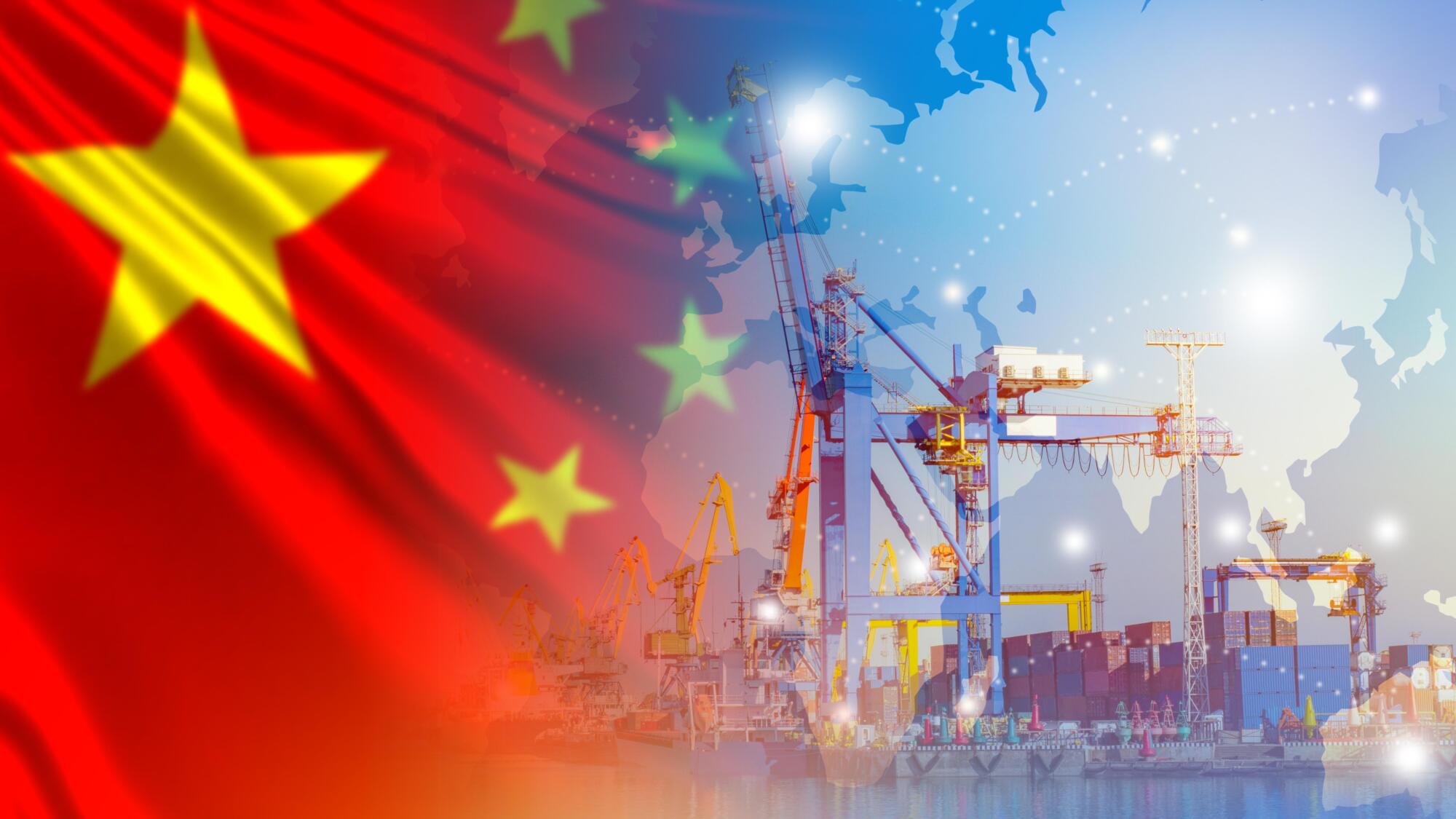
Blog post
Chinese turbines cannot succeed in the European offshore wind market because they are not bankable. Myth or reality?
15 August 2024
This month, Mingyang announced a deal with the Italian government to build a factory in Italy supplying their 19MW turbines to the wind farms developed by Italian developer Renexia. It is the latest of a series of announcements that involve the Chinese turbine manufacturer. They already supplied the first ever Chinese offshore turbines in Europe for a project developed by the same Renexia off Taranto and have now signed a preferred supply agreement with Luxcara, who has just won a 1.5 GW site in Germany this week.
While Chinese dominance in solar, battery and so many other sectors has been widely accepted, each piece of news about Chinese turbine suppliers knocking at the European door is followed by heated debates. Is the competition fair or is China subsidising its industry, as suggested in a recent investigation of the EU commission that raises fears of a new trade war? Should the European policy makers go one step further and copy the US in their protectionism? Can public auctions define rules that prevent Chinese turbines to be competitive? In the urgency that climate change commands, is the question of where the turbines come from of any relevance at all? While the cost of living is fuelling the surge of the extreme right everywhere in Europe, is it sensible to fight the cheapest option?
The question on whether Chinese turbines will conquer the European market is not new. Our clients already asked us that exact same question 15 years ago when we set up Green Giraffe. We have never been part of the strong believers that Chinese turbines would flood the market and have historically considered that the challenges these suppliers will meet will prevent large deployment of Chinese turbines in Europe. The history of the wind sector proved us right and year after year, western suppliers kept their hegemonic position in wind in general, and Siemens and Vestas (and to a much lesser extent GE) their oligopoly in offshore wind. Chinese manufacturers barely represent 1% of all wind turbines installed in Europe, and not even 0.1% in offshore wind (which we will focus on for the rest of this article).
There are several reasons why it is time for our assessment to be refreshed:
- Price: the price delta between European and Chinese turbine suppliers has always existed, but the context makes it more decisive than it ever has. In the early days, the fixed feed-in tariffs (FiT) or contracts for difference (CfD) were set up without tenders at a level which was defined following an analysis of what a project needed to be viable, based on the European supply chain standard. Those have disappeared. The tenders that have followed led to 0-bid auctions in many countries during which the winner was selected based on qualitative criteria, again favouring European suppliers. Now, following the surge in CAPEX since 2022, the economics of the projects are tighter, and in countries that have not reverted yet to fixed price CfD auctions, the economic viability is not just a matter of transfer between cost of supply and lease payments but rather a matter of whether the project will be built at all.
- Availability: at the same time, the supply chain is so constrained compared to the targeted capacity in offshore wind that the bargaining power has shifted from the developers to the suppliers. Turbines in particular need to be reserved years in advance, and heavy down payments are required to secure a slot from the big 3. While this makes the whole industry more resilient in the long term, after years of unsustainably low profits for squeezed suppliers, it also creates some room for newcomers to offer additional capacities with shorter timing.
- Floating: the offshore wind ambition of many countries can only be realised through the development of a floating technology. Or rather technologies, as more than 100 floating technologies have been counted. It makes for the incumbent turbine suppliers impossible to invest the significant amount of time required to validate engineering design of the turbine-floater unit. They need to choose only a few of them and ignore the rest. For a developer that wants to develop a project with a floating foundation that is not chosen by the western turbine suppliers, the only option is to consider Chinese suppliers, which are ready to invest the required time to penetrate the European market.
For all these reasons, the question has become less and less theoretical, and our view is that we will see Chinese turbines installed in European waters before the end of the decade.
Which leads to the question that really focuses our interest as financial advisor: are Chinese turbines bankable?
There are two ways to answer this question
- a bottom-up approach: analysing the bankability issues that come from installing Chinese turbines in the projects
- and a top-down approach: sounding the banks about their risk appetites for Chinese turbines.
Let first look at the bankability issues that arise from having Chinese turbines on a project:
- Track-record: when I started my career in China in 2006, thousands of onshore turbines were already being installed there, but many Western players believed Europe technologies would remain dominant for a long time in the more innovative and complex offshore wind sector. As in so many other sectors, China exceeded expectation and is now the single largest offshore wind market… and only with Chinese suppliers. Banks may have many bankability concerns, but lack of experience of turbine suppliers should not be one of them.
- Quality: the banks will rely on their technical advisors to assess whether the quality of those turbines is good enough. At a time when the market is saturated with news of serial defects on GE and Siemens turbines, this will be a key assessment for any turbines and even more for Chinese turbines. However, there is nothing at this stage that lets us believe that there is any major quality issue preventing bankability.
- Transparency: maybe the biggest issue of all when it comes to bankability. In order to assess not only the quality above, but also the conditions of fabrication, alignment with equator’s principles, plan to store spare parts or just the reliability of the track-record, the banks and their advisors are conducting intrusive due diligence that even European manufacturers struggle with and that Chinese suppliers have failed to comply with so far. It is nonetheless crucial for the bankability test, and we have seen recently that Chinese suppliers will not succeed without sharing more information on their products, their fabrication and their performance. We believe that the route will still be long to get an acceptable level of openness, but there is a path.
- Contractual terms: another barrier to entry was the knowledge of the western suppliers of what it takes to offer a bankable package. In fact, we at Green Giraffe helped them more than a decade ago to size their offers in an acceptable way for lenders: 100% cap of liability under the TSA, delay compensation payments covering at least the debt, direct agreements, full scope O&M including an availability warranty with limited exclusions, etc. In the meantime, the market has moved, and weaker terms have been financed, but in today’s market in which the contractors have gained the bargaining power, they push terms to the limit of what the banks can be comfortable with. The Chinese suppliers, on the other hand, are using stronger commercial terms as another differentiating factor on top of the price to gain market shares and often provide more “bankable” terms than the European competitors. From the terms we have seen, adjustments are still needed to match bankability standards, and it may still take a bit of time to align, but this last point of attention suddenly seems to play in favour of the Chinese companies rather than against them.
Now, if the detailed risk analysis doesn’t give an obvious red flag, it would nonetheless remain unbankable if the banks insist that they don’t want to finance projects using Chinese turbines. This has been their base case position for years. We have carried out a market sounding with the most active lenders in the sector to explore whether this view has changed.
Half of the banks tested still continue to consider it as a no go area and would not even look at a project using Chinese turbines. The other half is more open and can engage in a process with a particularly strong due diligence on all related points of concern and with adjusted lending terms (so to be clear, part of the money saved on the turbine price will be used to pay higher margins to bankers).
There is a different level of flexibility in that second group of lenders, from a genuine interest in making it work in all situations to the position that, for example, it can be considered for fixed technology, but not combined with the new floating technology risk. So the least that we can say is that there is no strong enthusiasm in the lending community to finance Chinese turbines, but for a non-negligeable part of them, the position has nonetheless shifted from a blunt “no” to a “maybe, under certain conditions”.
My conclusion is that the western turbine suppliers, who are fully booked anyway, can breathe. Even without a complete protectionist policy shift, there won’t be a tsunami (or more to the point, “Haixiao”) of Chinese turbines in the offshore wind market anytime soon. Westerners will manage to keep their currently high bargaining power and build up more reasonable profit in this decade than in the previous decade. For the first time, though, we predict that Chinese turbines will be used in commercial-size European projects. It will once more divide the lending community, but as for any material market change before (new technology, merchant component of the tariff, supply chain bottleneck), well-structure projects with strong contractual terms validated by serious due diligence from the best advisors- and all these prepared and addressed before approaching the banks – will be able to raise non-recourse finance for projects using Chinese turbines.

